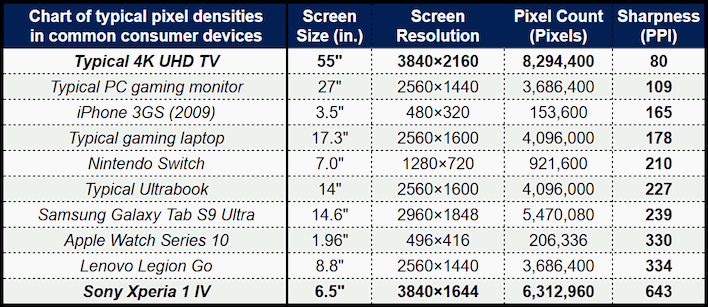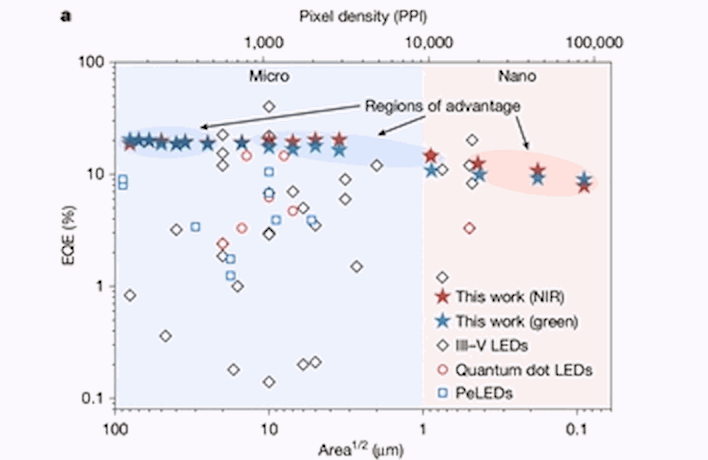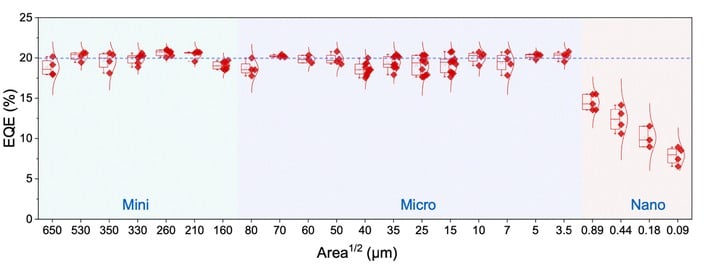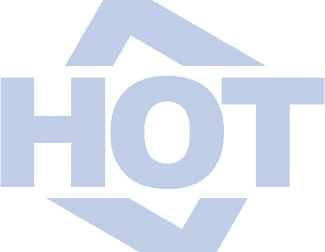Wild LED Display Tech Uses Nano Pixels To Achieve An Incredible 127,000 PPI

Strictly speaking, based on the researchers' own numbers, the technology may scale even further beyond that. The group, made up of six scientists from Zhejiang University as well as two collaborators from University of Cambridge, say that they have created "micro- and nano-perovskite LEDs (PeLEDs) with characteristic pixel lengths from hundreds of microns down to 90 nanometers." For comparison's sake, that's an LED that's just ten times larger than individual logic gates in cutting-edge processors.
Near-infrared micro- and nano-PeLEDs. Source: Nature
One of the main reasons that the researchers elected to pursue this avenue of study was due to the way micro-LEDs lose efficiency as they get smaller. Typical mini- and micro-LEDs have relatively poor External Quantum Efficiency (EQE), which means they only produce a small amount of the energy they consume in photons, and this value gets worse as the LEDs get smaller—under 10% in the 1-micron range.

By contrast, these new perovskite LEDs can apparently reach an EQE value of approximately 15% at 0.89 microns, and over 20% at 3.5 microns. Both values are superior to conventional LEDs made using III-V semiconductors. Even all the way down to the vaunted 90-nm level—that's 0.09 microns—they're still performing at around 7% efficiency, which, while very poor overall, is extremely high for a device of that size.

The researchers say that this new technology is not only more efficient and more scalable than classical micro-LEDs, but that it is also cheaper to produce, which could mean the proliferation of high-density micro-LED and nano-LED screens in the future. That's still a ways off, though; while the researchers have already demonstrated these LEDs arranged in a functional TFT active matrix (top image), it will still be at least a few years before displays utilizing this technology to deliver cheaper and denser LCD screens are available.

